Your virtual ID just got a facelift. Your e-Aadhaar will now contain a photograph of you too. Read on to know more.
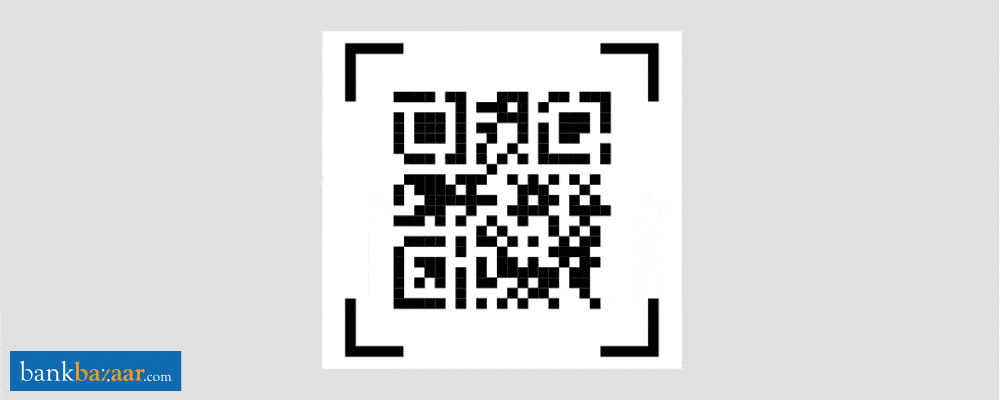
When the government introduced demonetisation in 2016 in the pursuit of greater transparency and accountability, the daily lives of Indians came to a grinding halt. We had little choice but to abandon the paper bills and make use of our smartphones to make payments. Today, in fact, digitisation has spread its tentacles to not just payments, but has made its way into how people buy a financial product like a Credit Card, Personal Loan or even Mutual Funds. According to a Credit Suisse report, digital payments in India are set to soar to $1 trillion by 2023. So much so that the RBI is now going to start a separate ombudsman to address complaints relating to digital payments.
But when digital payments in India are going through a tumultuous change, can our very own virtual ID – e-Aadhaar be far behind? The UIDAI has introduced digitally-signed QR code on e-Aadhaar that will now contain a photograph of the Aadhaar holder too. This will be in addition to demographic details that the QR codes contain. According to the UIDAI, this is to facilitate better authentication and offline verification of an individual.
Additional Reading: Everything You Need To Know About Aadhaar Virtual ID
What’s new?
Earlier, the photograph of the Aadhaar holder was missing in e-Aadhaar. It just had the Aadhaar holder’s demographic details along with a secure digitally-signed QR code. Now, the UIDAI has replaced the existing QR code to add the photograph of the Aadhaar holder, along with the existing details.
According to the UIDAI, this upgrade will enable various user agencies to easily verify the authenticity of Aadhaar cards offline. However, to be certain that a person is a bona fide owner of the Aadhaar card, the user agency will still need to perform a manual check of the photo with the individual’s face or through whatever authentication scheme that the agency relies on.
Additional Reading: Want To Check If Your Bank Account Is Linked to Aadhaar? Follow These Steps
How to keep your Aadhaar data protected
Possessing an Aadhaar card may have become absolutely necessary today but there have been growing concerns over the security of the information that Aadhaar has access to. With ethical hackers in recent times finding loopholes in Aadhaar security and revealing crucial private information about government officers on social media, many contend that pulling up someone’s Aadhaar information can be done with a simple Google search.
On the other hand, the government has refused to bow down to these claims and has advised individuals to use their discretion when sharing their Aadhaar details on third-party websites.
Additional Reading: E-Aadhaar 101
Here’s what you can do to keep your Aadhaar data safe:
Recently, the UIDAI in order to improve the security of Aadhaar information granted Aadhaar holders the choice to lock their biometric details. Locking your Aadhaar details will ensure that no one has access to your biometric information without your permission.
Locking your Aadhaar details is as easy as ABC and shouldn’t take you more than a few minutes. When you need these details for authentication, all you have to do is unlock them. In this case, your details will stay accessible only for 20 minutes until it gets automatically locked.
How to lock your Aadhaar biometric data
Step #1: Visit the UIDAI website and select ‘Lock/Unlock Biometrics’ under ‘Aadhaar Services’
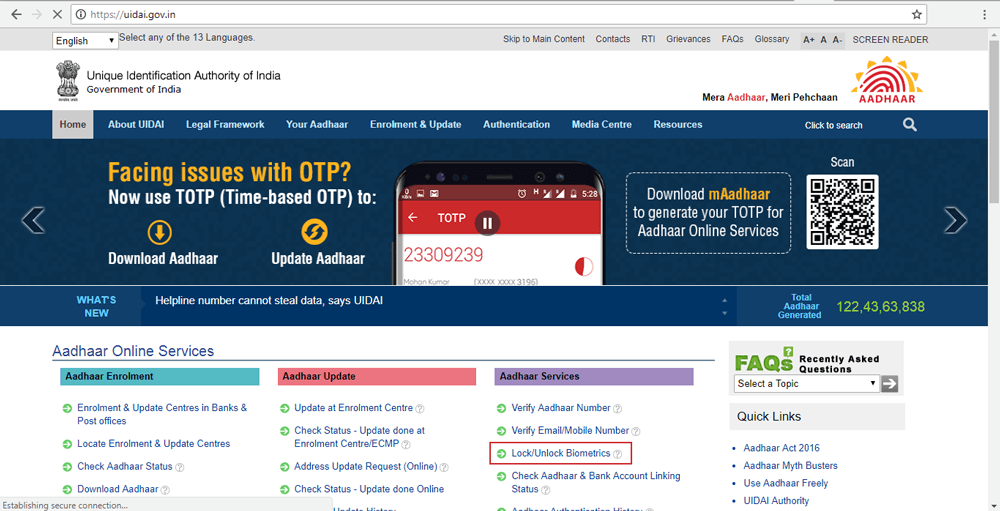
Step #2: You will be redirected to a page where you will be asked to enter your 12-digit Aadhaar number and the security code. Click ‘Send OTP’ thereafter.
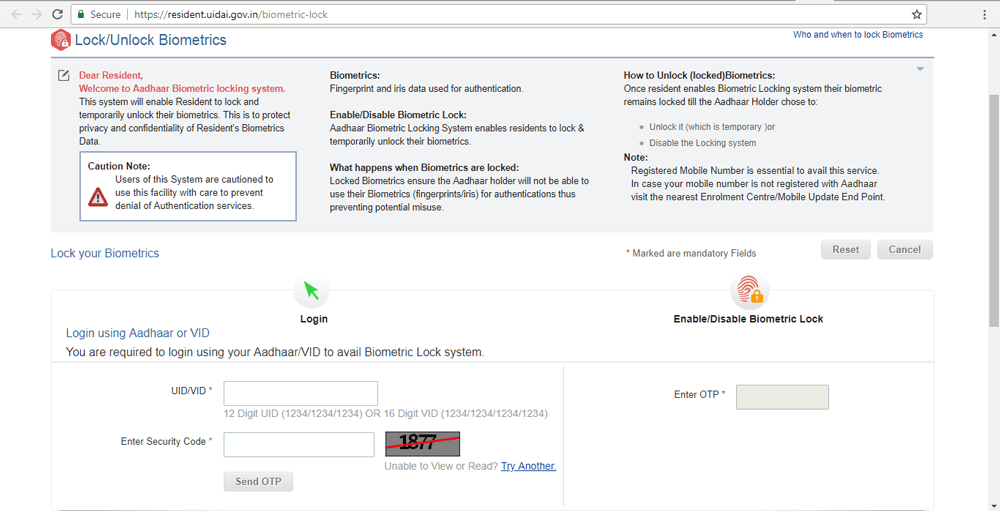
Step #3: The OTP will be sent to your mobile number that is registered with your Aadhaar. It will be valid for 30 minutes only. Enter the OTP on the same page and click ‘Login’ to go to the next page.
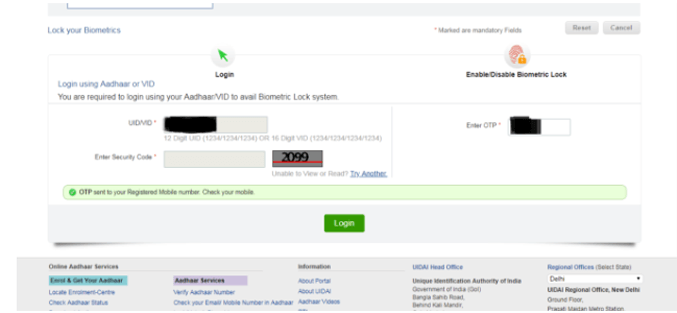
Step #4: On the next page, you will be asked to enter the security code to enable biometric locking. Enter the code as shown and click ‘Enable’.
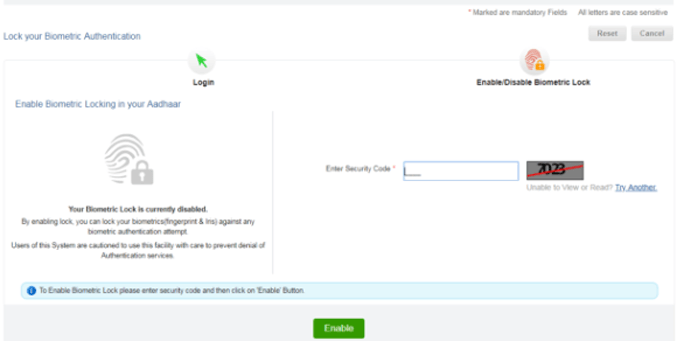
Step #5: Once you click ‘Enable’, your biometric data will be locked and the following page will appear:
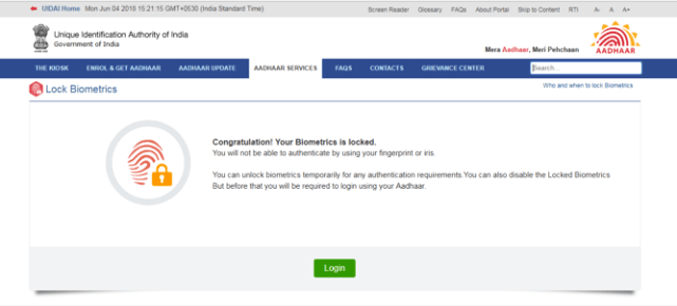
How to unlock your Aadhaar biometric data
If you wish to unlock your biometric details or disable the lock, follow the same procedure as mentioned above till Step #3. Then, click ‘Unlock’ or ‘Disable’ after entering the security code.

With the new QR code the government may have enhanced the security of Aadhaar, but the onus of ensuring that your biometric data stays protected from misuse is equally on you.
We can help you stay protected from financial vulnerabilities with our range of financial products. Take a look by clicking the link below.